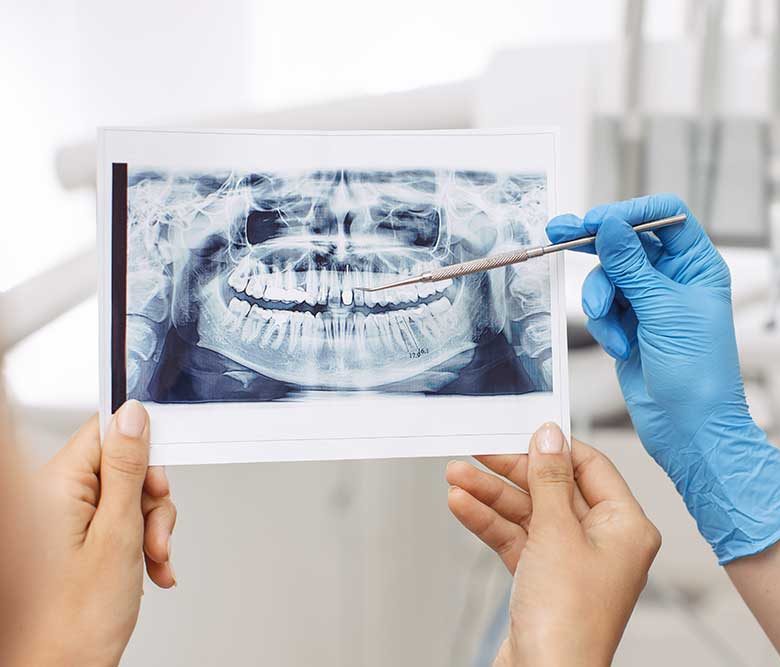

How are Wisdom Teeth Removed?
How are wisdom teeth removed and why don’t people need them anymore? If you’re experiencing tenderness in the back of your gums, it might be a sign your wisdom teeth are coming through. These teeth typically come through during the ages 17 – 25 and were originally designed to help humans chew tough nuts, roots, and meats. But since humans have evolved to using utensils, wisdom teeth are no longer needed, and the human jaw is no longer large enough to accommodate extra teeth. This is because the human jawbone has grown increasingly smaller and narrower from lack of use, as chewing hard food stimulates the jawbone. As much, the introduction of wisdom teeth can quickly disrupt the harmony of the jaw, causing overcrowded teeth and problems with the bite. This is why many dentists recommend removing wisdom teeth to stop this from occurring.
In today’s article, we answer ‘How are wisdom teeth removed’ and look at the removal procedures for erupted versus impacted wisdom teeth.
The Process of Wisdom Teeth Removal
Before Removal
If your dentist notices wisdom teeth growing in, they’ll first take an X-ray to see what angle the teeth are growing in. If you’ve only got one or a couple growing and the growth appears normal, a dentist may suggest leaving the teeth as it’s highly unlikely disruption will occur. However, if teeth are growing in at an angle or your mouth appears as though it will have trouble fitting the teeth without shifting nearby teeth, a dentist may recommend removal. This is especially important for patient’s who’ve had braces, as wisdom teeth can quickly wreak havoc on years (and thousands of dollars’ worth) of orthodontic work. It can also cause problems with oral hygiene if the tooth area is difficult to clean and gets food trapped in it.
Surgery
When it comes to ‘how are wisdom teeth removed?’ it’s commonly done in one of two ways – a simple extraction or surgery.
How are wisdom teeth extracted: In-chair procedure
If you have wisdom teeth coming through and they’ve pierced through the gum, a dentist will only have to perform a simple extraction. This will involve using a local anaesthetic to numb the area and using a special forceps to wiggle the tooth out. A tooth may break in the process and may have to be removed in pieces, but this rarely happens. This procedure is performed in the dentist’s chair and is painless, though you may feel a pinch from the numbing needle. Once performed, a dentist will use a gauze to wipe up any blood and the affected areas will form a small blood clot to heal the gums. A condition called ‘dry socket’ can occur if a blood clot fails to develop, which can be quite uncomfortable as the patient’s nerve is exposed. If this happens, it’s worth seeing a dentist straight away for a sedative dressing to help a new blood clot form.
How are wisdom teeth extracted: Wisdom teeth surgery
If your wisdom teeth are severely impacted or under the gum, you’ll likely need surgery. This is performed under general or local anaesthetic, and involves the oral surgeon making an incision in the gum and cutting the tooth into pieces to remove it. Sometimes a small piece of bone may need to be cut to access the tooth. Afterwards, the oral surgeon will place stitches in the area which will dissolve in a few days and stuff gauze in the affected area.
After surgery
After surgery, it’s recommended you have someone drive you home as you may feel drowsy or slightly disoriented after the anaesthetic. You’ll likely not experience too much pain or discomfort, but the affected area may feel tender for a few days. To fast track your healing, it’s recommended you do the following:
- Eat soft foods.
- Use an ice pack for swelling.
- Avoid brushing blood clots.
- Take any medication dentist prescribes for swelling.
- Don’t rinse mouth too harshly.
- Don’t smoke or drink alcohol.
Interested to Learn More?
Do your back molars feel tender or you can see new teeth erupting? Contact our dental clinic Brisbane team today to book an appointment with a Gympie Road Dental dentist. You can call us on 07 3915 8888, use our online form or email reception@gympieroaddental.com.au to help alleviate the pain of a wisdom tooth or prevent further dental problems.
